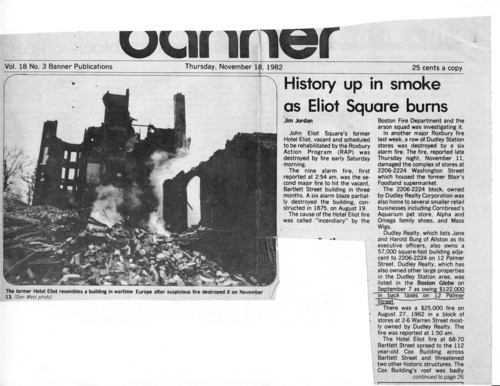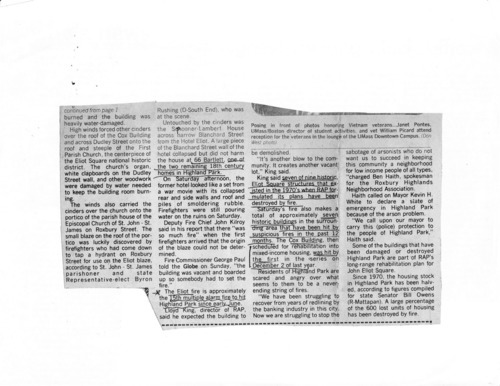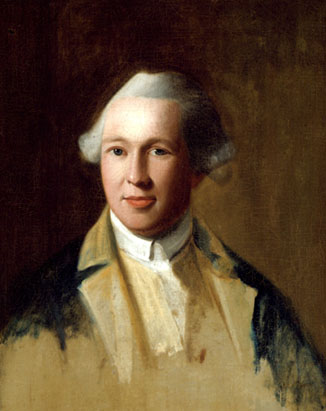Last week, the National Archives released the full documents from the 1940 Census, which started on April 1 of that year. There’s a federally mandated 72-year waiting period from the time of a census until the full data, including such info as names, occupations, ages, marital status, and income, can be released.

On April 6, 1940, census enumerator William M. McMorrow stopped by my house on Beech Glen Street and interviewed Daniel Fallon, the 60-year-old widower who lived here, in my 2-bedroom home, with his son and 4 daughters, all between the ages of 15 and 27. In Mr. McMorrow’s careful handwriting, we can learn a lot about life at the tail end of the Great Depression for Danny Fallon and his family.
Mr. Fallon, unlike some of his other Irish neighbors on Beech Glen St., was a native-born American. He had nothing but a 4th grade education, although he made sure that all of his children finished high school. A victim of the great depression, he hadn’t “worked” in 10 years, but thanks to the “emergency work” programs of FDR (which were counted differently than regular employment), he managed to make $1025 a year as a laborer constructing sewers.

His eldest daughter Geraldine, still single at the old age of 27, pulled in $1000 a year as a hospital stenographer, and her younger sister Margaret had worked 33 hours the previous week as a sewing instructor in Boston Public Schools. The work obviously wasn’t steady, as she’d only managed to bring in $383 the previous year. Daniel Jr., 21 years old and unemployed for the last 21 weeks, had last worked as a shipper in an office supply company, where he’d made $504. His two younger sisters, Veronica, 19, and Catherine, 15, were listed as students. All told, the family of 6 was surviving on less than $3000 a year, 1/3 of that from government make-work programs, but at least they owned their own home, valued then at $2200.
In the 1940 census, the 14th and 29th person interviewed on every page (out of 40 people, or 5% of the total), were randomly selected for a few more questions. Daniel Jr. was one of those 5%. We learn that both of his parents, including his deceased mother, were born in Massachusetts. We also can make out that although Daniel Jr. was not a veteran (although there’s a good chance he ended up fighting in a couple of years), his father Daniel Sr. was. We learn that they spoke English in the home when he was a child. And most interestingly, we learn that he was one of the first citizens to get one of those newfangled Social Security Numbers.

Their neighbors were in similar situations. By 1940, the majority of people in the neighborhood were native-born, but the recently-ended immigration boom still showed. The neighborhood in 1940 was more heavily Irish than it had been 30 years earlier when it was sometimes called “German Hill,” but there were also Italians, Poles, and many others. Next door, Thomas and Olga Constantine, the Albanian immigrants with 3 young native born sons, rented out one of the units in their triple decker to Greek-born Constantine Tjaerlis, along with his Turkish wife and their two grown sons, born in Massachusetts. It must have been an endless source of confusion, Constantine the landlord and Constantine the tenant. I’m sure there was no shortage of jokes from the Irish neighbors.

The National Archives site hosts all of the many thousands of documents from the 1940 census for free, but it’s a bit hard to navigate. The basic process to look up an address is to find your enumeration district, which is a smallish block of territory. My enumeration district, 15-394, covers Fort Ave, Beech Glen St, Highland from Fort to Marcella, and Thwing Street.
You can find your enumeration district on the NARA website, but I’ve gone to the trouble of finding the page of the maps that has the enumeration districts for Fort Hill already. Download the full .jpg image from my mirror here (right-click and select “save as”). From there, rather than using the NARA (National Archives) website, it’s easier to use this handy site set up by historian Steve Morse as a public service. Just enter your ED number and click “NARA viewer.”
If the map doesn’t work for you, Mr. Morse also has an ED finder that’s superior to the one on the NARA website. Enter as much info about the address as you can and it will guide you to the right ED. Again, just click “NARA viewer.”
Once you’re at the NARA viewer, things are still a little confusing. The National Archives site is a bit slow and not particularly well-laid out. If you know that you have the right ED number selected, you can download the images and view them in a photo viewer (I like the free IrfanView for this kind of work, but you can use whatever viewer you like). You can choose to download a single page or all of the pages for the district, in standard or high resolution. The high resolution pages form a pretty big .zip file, so don’t do this on dial-up.


You’ll probably have the best success just downloading all of the pages at once as a high-resolution file and searching them in your photo viewer instead of trying to use the viewer on the NARA website. Street names are written on the far-left, in vertical handwriting. House numbers on the street are in the first column to the right, then another number that indicates the order in which the families were interviewed. It takes a little while to figure it out, but once you do it’s pretty self-explanatory.
Have fun! If you find anything amazing, post it in the comments!


























